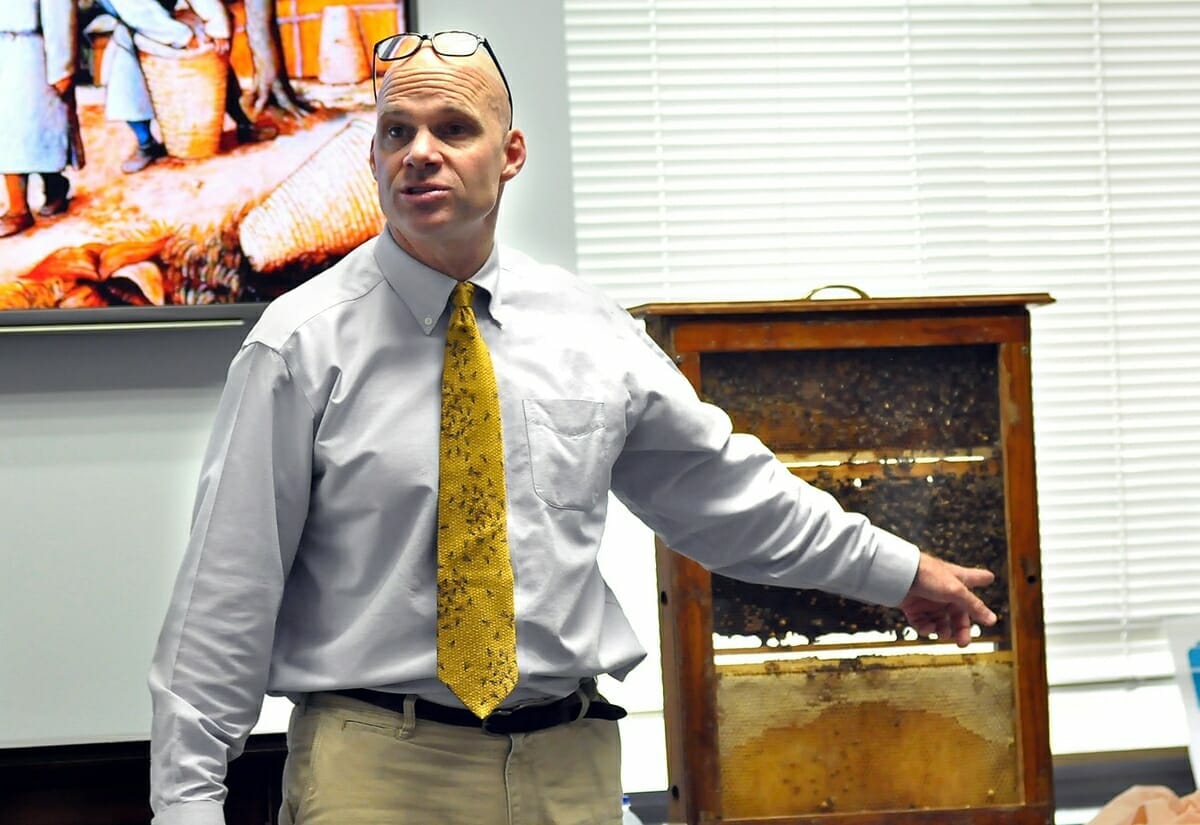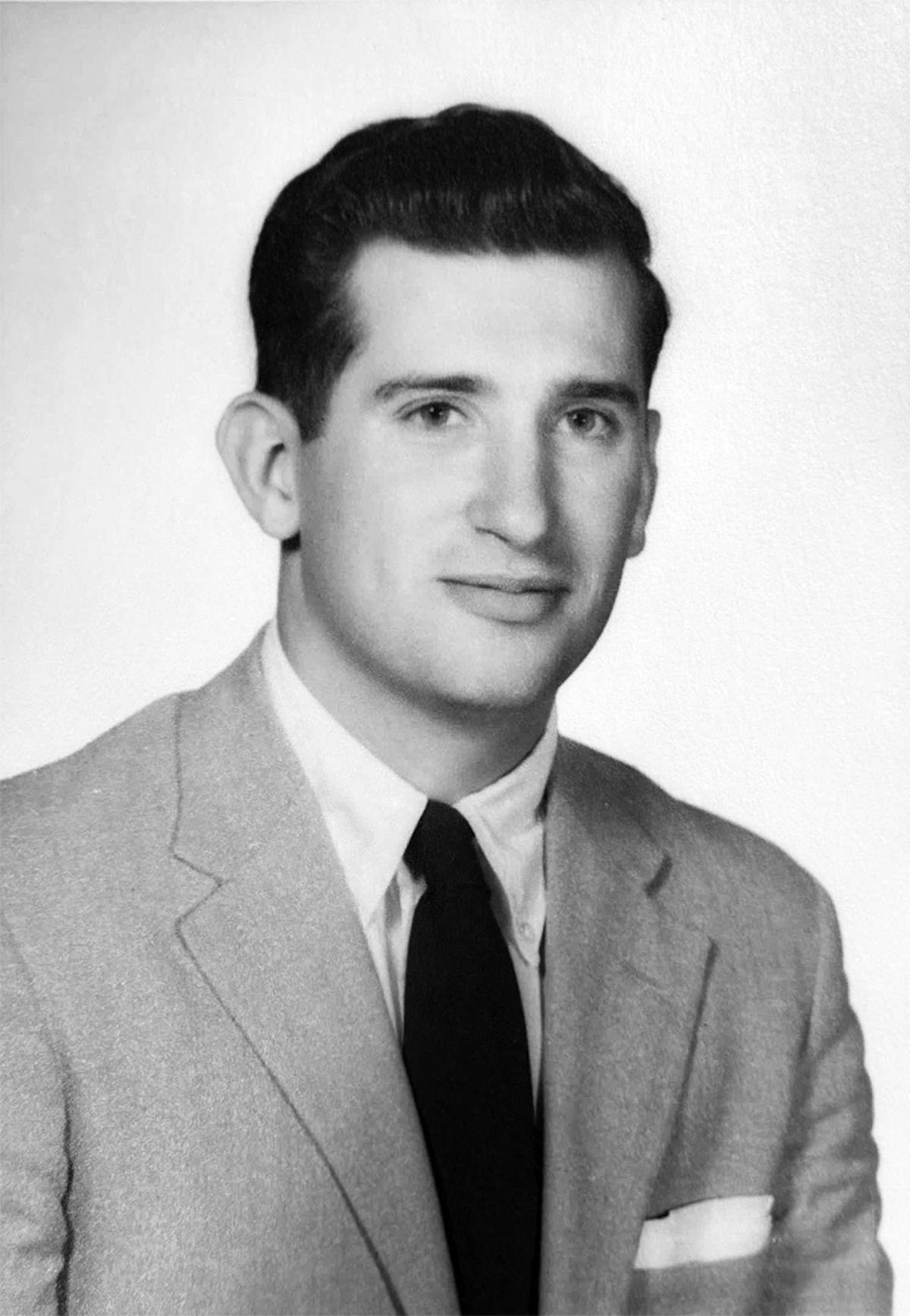Photo above: Certified beekeeper Robert Landrum uses a glassed in display case to show what goes on inside a modern Langstroth hive on April 5 at the Beaufort library on Scott Street. Photo by Bob Sofaly.
By Bob Sofaly
Robert Landrum is not only a history professor at The University of South Carolina Beaufort, he’s also a certified beekeeper and was on hand for a “backyard beekeeper” lecture on April 5 at the Beaufort branch of the Beaufort County Library.
Cave paintings in Northern Europe indicated wild honey and bee’s wax have been gathered for 15,000 years.
Gathering wild honey gave way to beekeeping at about 3000 BC in Egypt with invention of man-made hives.
The square Langstroth hive was invented in 1852 and is still being used today around the world. The superior design allows beekeepers to harvest honey without damaging the hive.
Landrum said the invasive European honey bee, Apis Mollifier, once called called “white man’s flies” by Native Americans, is in sharp decline.
Landrumn said industrial and over-the-counter use of certain pesticides has caused neurological disorders in bees.
“They fly out of the hive and can find the flowers but they can’t find their way back,” Landrum said. “The hive doesn’t get fed and eventually dies,” which is known as colony collapse disorder.
Landrum said in 1990 the disorder was linked to certain pesticides. Those pesticides were banned in Europe in 2013. Landrum said the ban was blocked by lobbyists in the United States and their use continues today.







